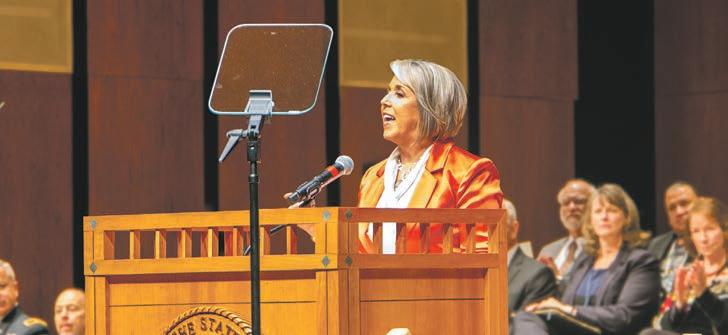
11 minute read
OPINION
PHOTO CONTEST 2023
FACES: Expressive, engaged people and animals. Please get permission from subjects when applicable. PLACES: Outdoors and the built environment. Enough with the churches and the statues already. What else do you see? MOVEMENT: Candid shots of action. Machines, dancers, atoms? ODD: Weird, genre defying, not Photoshopped but funky. This is the wild card category.
Advertisement
Mail letters to PO Box 4910, Santa Fe, NM 87502; or email them to editor@sfreporter.com. Letters (no more than 200 words) should refer to specific articles in the Reporter. Letters will be edited for space and clarity.
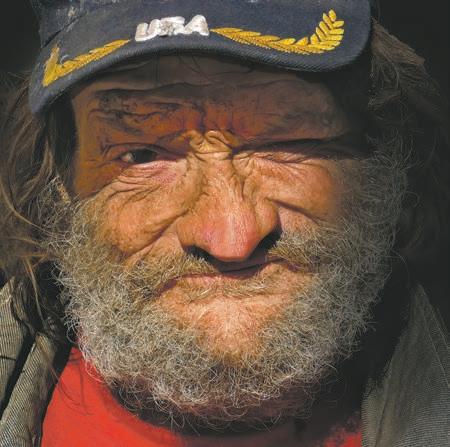
NEWS, JAN. 4:
SAVE THE LAST DANCE

Elected officials should answer to their constituents—not wealthy special interests. After the holiday season wraps up, inauguration season is in full swing. With lax inaugural fundraising rules, though, these ceremonies can be irresistible opportunities for lobbyists, contractors and corporations to lavish gifts on newly elected officials, creating clear conflicts of interest.
Although campaigns ended months ago, governors and mayors continued fundraising—in eye-popping amounts—for inaugural balls and parades. This fundraising is largely unregulated: While campaign contributions are typically limited and publicly disclosed, inaugural fundraising is an influence-peddling bonanza with few safeguards or transparency requirements.
New Mexico’s governor took a positive step by voluntarily capping and publicly disclosing inaugural donations, but that’s not enough. Pro-democracy rules that curb corruption and ensure politicians are accountable to voters should apply to inaugural fundraising. Donations should be subject to reasonable limits and publicly disclosed. And groups with business before the government, like government contractors, should be barred from giving. A handful of states and cities, like Kansas and New York City, enforce laws to combat the payto-play political culture pervading inaugural fundraising, and the rest of the country should follow suit. AARON MCCEAN CAMPAIGN LEGAL CENTER
2022 SFR PHOTO CONTEST HONORABLE MENTION MARC FORLENZA ENTER BY FEB. 1! SFREPORTER.COM/CONTESTS
Entry fees are $5 per photo. There is no limit to the number of entries each photographer may make. Photos must be submitted electronically at 300 DPI. We’ll award prizes from local restaurants and retailers for two winners in each category. Selected photos are printed in a February edition of SFR and are featured in a pop-up event benefiting student training by the New Mexico Fund for Public Interest Journalism.
Sponsored By
A
HUMM I N GBIRD • INTEGRATIV E • HE
HUMM I N GBIRD • • HUMM I N GBIRD • • ALTH• • HUMM I N GBIRD • INTEGRATIV E • HELTH• T INTEGRATIV E • HEALTH INTEGRATIV E • HEALH •HUMM I N GBIRD • INTEGRATIV E • HEALTH• HUMM I N GBIRD • INTEGRATIV E • HEALT UMMI H NGBIRD • I N TEGRATIVE • HEALT H • HUMMINGBIRD • I N TEGRATIVE • HEALT H • HUMMINGU BIRD • I N TEGRATIVE • HEALT H • HUMMINGBIRD • I N TEGRATIVE • HEALT H • HUMI MNGBIRD • I N TEGRATIVE • HEALT H • HUMMINGBIRD • I N TEGRATIVE • HEALT H • HHUMM I N GBIRD • INTEGRATIV E • HEALTH• HUMM I N GBIRD • INTEGRATIV E • HEALTH• MI MNGBIRD • I N TEGRATIVE • HEALT H • HUMMINGBIRD • I N TEGRATIVE • HEALT H • HUMI MNGBIRD • I N TEGRATIVE • HEALT H • HUMMINGBIRD • I N TEGRATIVE • HEALT H • H HUMMINGBIRD • I N TEGRATIVE•HE LT H •
HUMMI • NGBIRD • MI H I HEALT • E N TEGRATIV
U
H
NGBIRD • I N TEGRATIVE
HUMMINGBIRD • L HEALT H • E I N TEGRATIV
7 DAYS, JAN. 4:
“MORE BURGERS SOUNDS AWESOME” NAPRAPATHY MANUAL THERAPY & JIN SHIN JYUTSU ENERGY BALANCING NOT A GOOD IDEA A Integration of body, mind, heart & spirit [More than] one out of three adults in the US ...so Life can be sweeter! is obese. Just look around. Do you really think a “Fat Burger” is a good idea? Nevermind that you are essentially eating a rainforest. MARC BONEM SANTA FE HUMMI • NGBIRD •
SFR will correct factual errors online and in print. Please let us know if we make a mistake: editor@sfreporter.com or 988-7530. HEA T H • E I N TEGRATIV Health Insurance accepted: BSBC NM, Cigna, Presbyterian ASO DR. UZI BROSHI D.N.
to schedule an appointment
SANTA FE EAVESDROPPER
—Overheard outside op.cit
“During the pandemic, I turned feral.”
—Overheard at The Bull Ring


THE LEGISLATIVE SESSION IS COMING
Hide your wife, hide your kids.
DUTCH BROS. COFFEE PERMIT ISSUED FOR FORMER CHEEKS SPOT
The pole will now be used for leaning as you wait for your chain-store latte.
LOBO MEN’S BASKETBALL TEAM STARTS 14-0, GETS RANKED IN TOP 25 FOR FIRST TIME IN AGES
Then promptly loses its next two contests, welcoming fans back to Earth.
NEW FLIGHTS BETWEEN ALBUQUERQUE AND LAS CRUCES BEGIN
Because that might be the most boring threehour drive in the world.
LONGTIME SANTA FE NEW MEXICAN COLUMNIST MILAN SIMONICH SUDDENLY HAS COOL HAT IN NEW WEBSITE PHOTO
Well, ring-a-ding-ding, daddio.

EMMA STONE WAS APPARENTLY FILMING SOMETHING FOR SHOWTIME IN SANTA FE
Call us when they make another Billy Jack.
ALAMOGORDO REPUBLICAN SEN. RON GRIGGS INTRODUCES BILL TO BAN SPRINGTIME CONTROLLED BURNS
Motioning vaguely toward Hermits
Peak/Calf Canyon likely enough evidence.
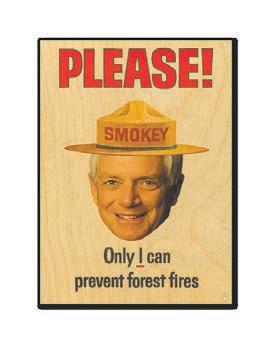
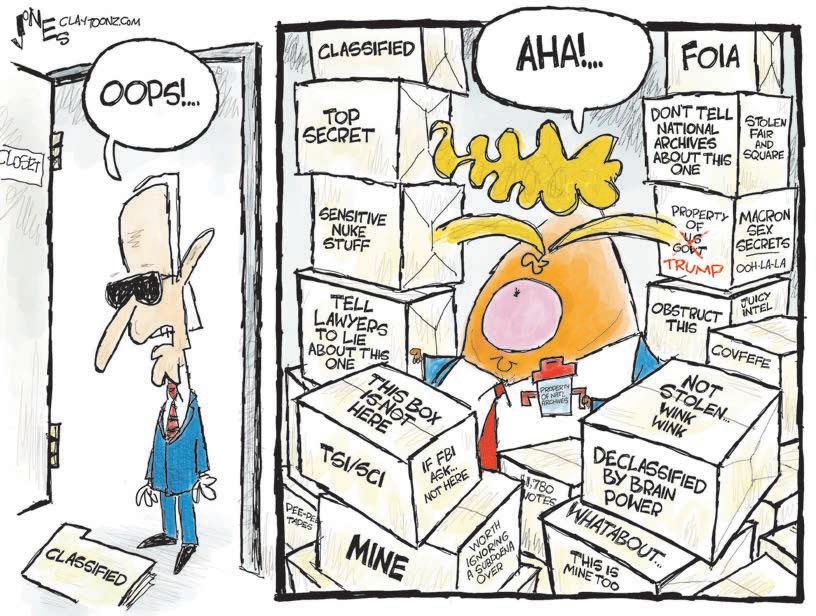

READ IT ON SFREPORTER.COM
GAS PASS
Brace yourself for natural gas bills surpassing last January by a mile.
WE ARE WAY MORE THAN WEDNESDAY HERE ARE A COUPLE OF ONLINE EXCLUSIVES:
RISE OF THE MACHINES
LANL scientists are using machine learning to predict the most viable vaccines.
Label it Green
Should New Mexico conduct research and push awareness about the public health risks of cannabis?
BY CLAIRE WILCOX tips@sfreporter.com
Thinking of trying a THC/CBD gummie to quell your post-holiday stress but not sure how safe that might be? If the dispensary you visit follows state law, there’ll be a warning label instructing you not to drive or operate heavy machinery while under the influence and informing you of the long-term health risks, particularly for pregnant and breastfeeding women.
Here’s what the labels won’t say: Studies have shown links between cannabis use and behavioral health disorders, including psychosis. Yet, New Mexico’s laws that made medical, then recreational cannabis legal don’t require such warnings.
A University of New Mexico doctor says the research is clear that heavy cannabis use increases the risk of psychosis, and he believes officials should make the public more aware of this and other known risks. He also says there’s been a dearth of research on the efficacy and safety of cannabis for medical use.
Meanwhile, a Santa Fe-based lawmaker appears open to statutory changes to improve public awareness around risks— and to the possibility of pushing some of the massive revenues rolling into the state since passage of the Cannabis Regulation Act toward deeper research into the plant’s benefits, as well as its harms.
Warning labels on cannabis products are a primary mechanism for consumer education. Whereas alcohol and nicotine are regulated at the federal level, warning labels for cannabis vary from state to state. Dr. Brant Hager, associate professor of psychiatry and behavioral sciences at UNM, notes the risk of psychosis in heavy cannabis users—characterized by hearing voices, paranoia and delusional thinking—is around four times that of the baseline population, according to a review by the Maryland Psychiatric Research Center in 2015 that synthesized 18 studies that enrolled more than 66,000 people.
For people who have experienced cannabis-induced psychosis, the study showed, risks of developing a chronic mental illness such as bipolar disorder or schizophrenia are “extraordinarily high”—almost half the people with cannabis psychosis developed a chronic mental illness later.
A summary paper from the National Academy of Sciences published in 2017 also concluded that cannabis is “likely to increase the risk of developing schizophrenia and other psychoses,” although it’s worth noting that association does not equal causality and there remains disagreement about its findings. Social anxiety disorders, depression, suicide, worsening bipolar disorder and risks of problem cannabis use are also listed, among others.
New Mexico is not the only state where warning labels are sparse. California, for example, added cancer to its cannabis warning labels in 2020, but not psychosis. That surprises Hager because “the links between cannabis and cancer are very weak.”
Robert Sachs, legal counsel for the New Mexico Cannabis Control Division, which is responsible, in collaboration with the Cannabis Regulatory Advisory Committee, for warning label rules, says officials did not discuss risks specific to cancer or schizophrenia when drafting the initial regulations. Rules came about through meetings with the Cannabis Regulators Association, a multistate group, and recommendations from the Department of Health.
“All rules do have to be based in some sort of scientific background,” Sachs says.
On the therapeutic side, Hager also has concerns about some aspects of the state’s medical program, which features a growing list of qualifying conditions— anxiety disorder was added just a few weeks ago. He feels the data on the efficacy and safety of cannabis for many of these disorders is sparse.
“The regulations pertaining to safety from a health and particularly behavioral health standpoint are sorely lacking,” Hager says, adding that labels also don’t address dosages.
Dr. Dominick Zurlo, director of the Medical Cannabis Division, says doctors are “supposed to be talking about those [potential side] effects with the patient.” And the health department’s website includes educational materials.
Hager also notes the need to study cannabis’ benefits. While there’s ample data on the plant’s ability to treat pain, how it might benefit or harm people with post-traumatic stress disorder is less understood. Historical bias toward researching harms instead of benefits of cannabis in the US—a vestige of the War on Drugs—likely accounts for the disparity.
The Cannabis Regulation Act tasked a Public Health and Safety Advisory Committee to monitor New Mexico’s health outcomes related to cannabis legalization, and its first report is due Dec. 1, 2024.
“The committee is just starting to gather information, and to determine what types of information are really needed,” says Zurlo. But the committee isn’t focusing on specific behavioral health conditions.
“I think from a public health standpoint and monitoring standpoint, I think it would really behoove the state to have something in place for epidemiologic surveillance of [psychotic illness diagnoses and suicide] correlated with the increased availability of cannabis,” Hager says.
Zurlo says it would be up to the Legislature to add on psychosis and schizophrenia as a research topic.
State Rep. Andrea Romero, D-Santa Fe, a co-sponsor of the Cannabis Regulation Act, says the state could find more ways to “be a leader in mitigating risks” associated with cannabis use, and is “definitely open to anything that has to do with better public health awareness.”
Romero wants to use some funds this year to improve cannabis-related public health, which could include crafting new laws regarding warning labels and improving systems for longitudinal data-gathering. She is actively discussing options with experts from national organizations like the Drug Policy Alliance, but is still in the drafting phase.
She does not have any specific plans to legislate around the impacts of cannabis on behavioral health in the session that begins Jan. 17, but tells SFR “it’s definitely on my radar.” Romero would like to know more about why people use cannabis and to better define heavy use and responsible consumption. In the wake of legalization, people may be interfacing less with their doctors about use, too, which concerns her. Sachs says the Cannabis Control
Division is considering proposing changes to the law, too—kind of a “clean up bill”—but “there’s still kind of an internal discussion.” He would not provide specifics. Hager, Romero and Sachs all like the idea of a program, like California’s, that diverts cannabis money to universities for cannabis research, which is getting easier to conduct nationally. “We can always work more closely with our doctors,” Romero says. “We started from scratch…this is the first time we’ve ever gone from an illegal substance to a legal substance and there are so many implications. The more that we have these conversations, the better it is for me to be able to do better.”
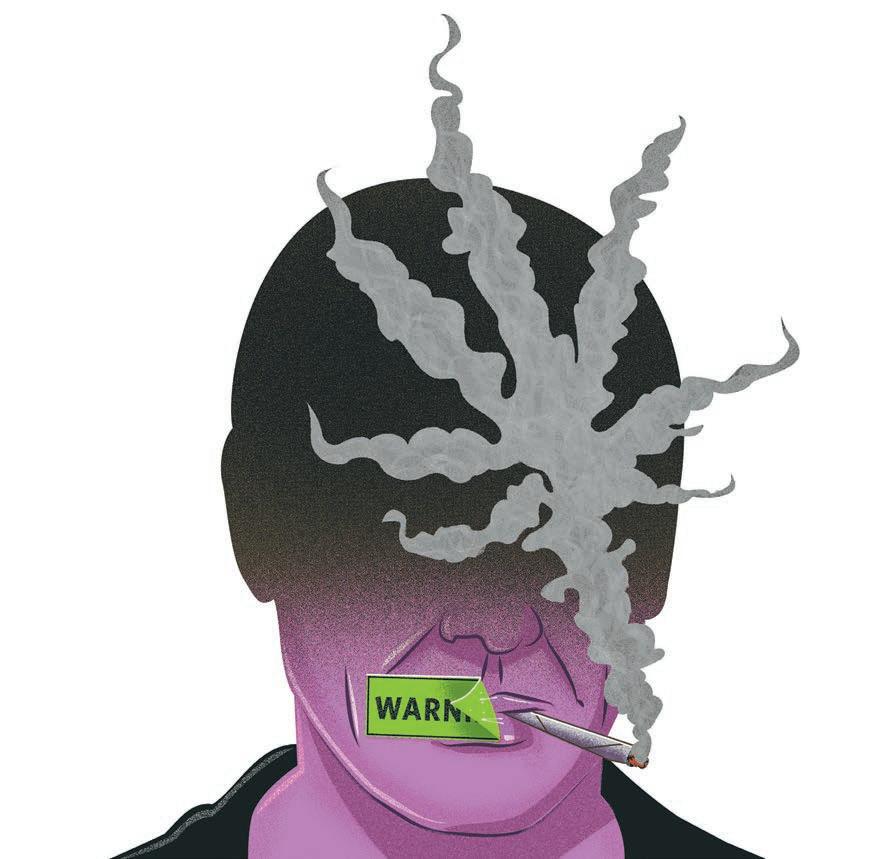
Claire Wilcox is an addiction psychiatrist and has treated hundreds of patients with substance use disorders. She gives regular trainings on medication-assisted treatment for opioid use disorders across the country and is adjunct faculty at UNM.



